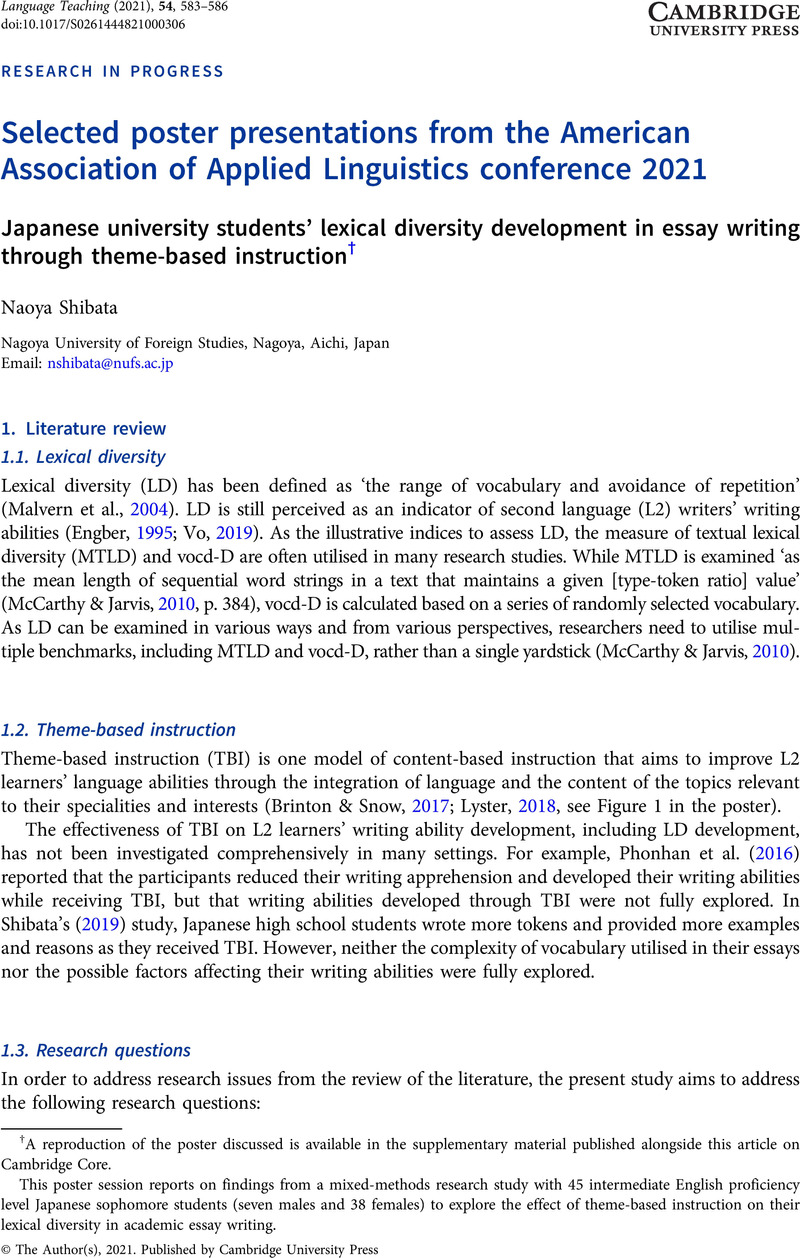No CrossRef data available.
Article contents
Selected poster presentations from the American Association of Applied Linguistics conference 2021
Japanese university students’ lexical diversity development in essay writing through theme-based instruction
Published online by Cambridge University Press: 02 August 2021
Abstract

- Type
- Research in Progress
- Information
- Copyright
- Copyright © The Author(s), 2021. Published by Cambridge University Press
Footnotes
A reproduction of the poster discussed is available in the supplementary material published alongside this article on Cambridge Core.
This poster session reports on findings from a mixed-methods research study with 45 intermediate English proficiency level Japanese sophomore students (seven males and 38 females) to explore the effect of theme-based instruction on their lexical diversity in academic essay writing.



